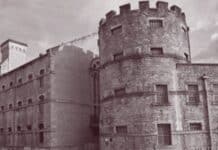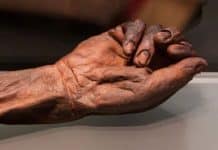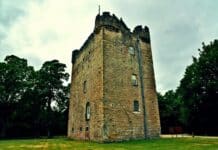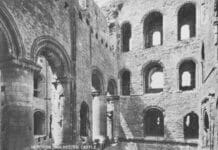Ireland is home to hundreds of castles from ruins on the landscape to fully restored imposing structures all witness to centuries of dark, blood stained and violent history. It is little wonder therefore that many of these citadels of power are at the centre of supernatural happenings and hauntings.
ANN MASSEY takes a look at Haunted Ireland Castles worth a visit, from spectral Druids maintaining their potent grasp of the land to the ghost of James Connolly, wounded after the Easter Rising in 1916.
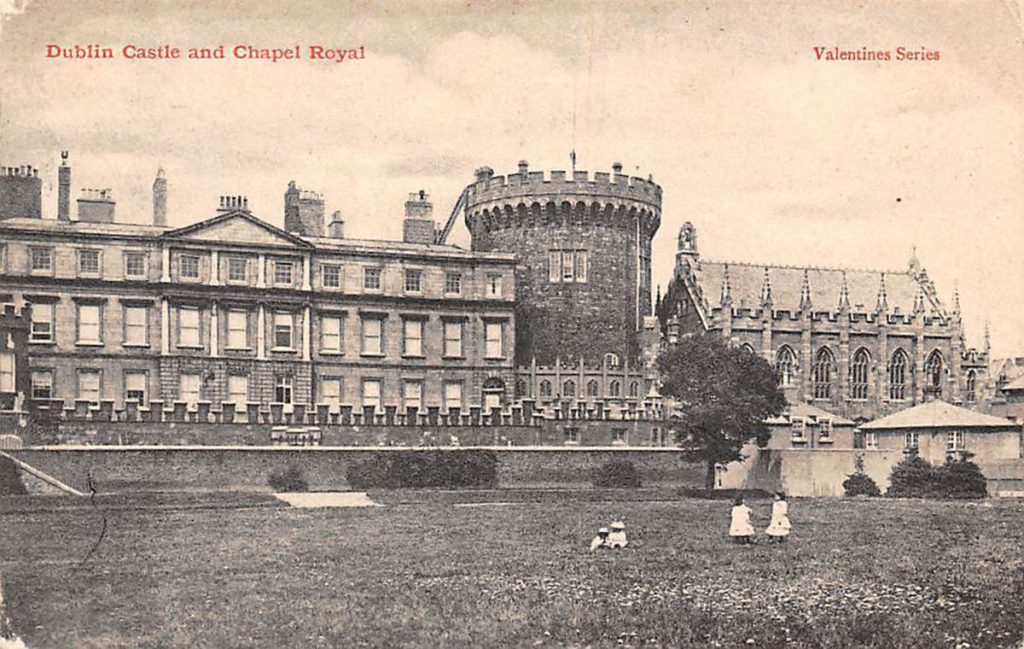
Malahide Castle, County Dublin
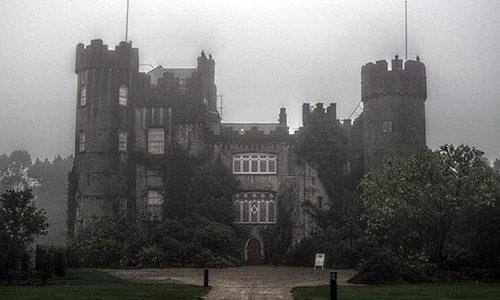
Originally built in the 12th century, Malahide Castle may look like an elegant place to visit complete with gardens, however it has a dark and bloody history with more than it’s far share of ghosts!
Sir Walter Hussey roams through the castle nightly, moaning in pain and despair, showing witnesses the spear wound in his side. His eternal anguish is heightened by the fact he was killed in combat on his wedding day and his widow promptly married his rival!
Lady Maud Plunkett appears to employees and visitors dressed for her wedding and is seen following her husband’s spectral form through the halls and the subject of the ‘White Lady’ painting leaves her canvas and serenely floats through the castle in darkness.
Owner Miles Corbet was hanged in the mid-seventeenth century and his shade can be seen as a soldier in full armour which then disintegrates and vanishes. Puck is a poor court jester who happened to fall in love with the wrong woman and was found stabbed in the chest. With his dying breath he said he would haunt the castle and to this day he does just that.
Ross Castle Hotel, Oldcastle, County Meath
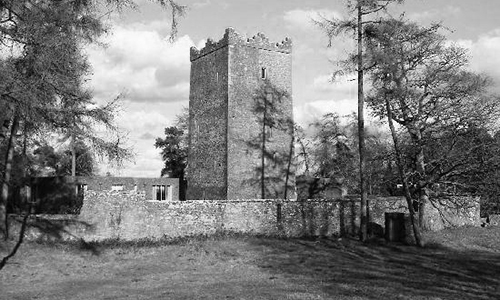
Built in the mid sixteenth century, the once family stronghold is now a hotel with several hauntings to its name including that of previous owner Richard Nugent, also known as The Black Baron – an Englishman renowned for his tough and brutal regime and hatred of the Irish.
His daughter Sabina made the mistake of falling in love with a local Irish boy called Orwin. Terrified of her father’s retribution, the love-struck pair eloped, only to fall foul of a storm on Lough Sheelin. Their boat capsized, drowning Orwin although the Baron’s daughter was rescued.
Sabina wasted away with grief and continues to haunt Ross Castle with her father, although not surprisingly the two are never seen together.
Clonony Castle, near Shannonbridge, County Offaly
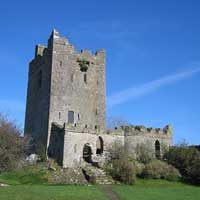
This 16th Century Tudor castle was built with all the usual features for the period, including a murder hole, mysterious passages and a three storey tower. The burial place for two cousins of Queen Elizabeth I, only discovered in 1803 just a hundred feet from the castle. The ghost of a skeletal being known as ‘The Thin Man’ can be seen at the top of the tower, an eerie hazy glow surrounding him.
Dublin Castle, Palace Street, Dublin 2
From the start of the 13th century, the heads of would be conquering and invading forces were spiked onto it as a deterrent to potential enemies, the bodies left to rot beneath, the residual horror remaining.
A widow was left to starve to death in a cell by the Mayor of Dublin, her own son – her heartbroken spirit left to cry in despair for eternity in her prison cell.
In 1316 Roger de Fynglas, a career criminal was sentenced to hang, however in a cruel twist his sentenced was replaced with the more callous “to stay without food until dead.” He remains within the dungeon, dwelling on his actions and fate.
When the Easter Rising took place in 1916, Commandant of the Dublin Brigade, James Connolly was seriously wounded. Captured, he was taken to Dublin Castle and kept for a week in a room now known as the James Connolly Room. Despite the wounds being mortal, James Connolly was dragged to Kilmainham Gaol where he was tied to a chair and executed by firing squad. His final days are imprinted firmly on the Castle and his presence is as much a part of Dublin Castle as the walls themselves
Annagh Castle, Lough Derg, Tipperary
Lough Derg is the largest lake within the Shannon region and means ‘Lake of the Red Eye’ and on its banks stand the ruins of Annagh Castle. Former owner, Edmund Roe O’Kennedy was brutally murdered by enemy forces before he could tell a soul where he had hidden his treasure.
He can be seen wandering the ruins, his face a grotesque death mask, his neck gaping open, wound bloodied and congealed. In 1975 an archaeology student was disturbed from digging by the sound of a gasping moan and came face to face with the hideous shade of Edmund Roe O’Kennedy.
Castle Leslie Estate, Glaslough, County Monaghan
The Castle was created in 1870 for the Leslie family of Scotland and has been the topic of many accounts of haunting.
Lady Marjorie Leslie resided in what is known as ‘The Red Room’ and was visited by the spirit of her son Norman, who had been killed in action during the First World War. Obviously finding comfort here, Marjory remains, long after her death.Lady Constance Leslie has taken permanent residence in ‘The Mauve Room’ and playfully levitates the bed as guests try to sleep.
The hotel is also home to an extremely noisy spectral monk, a shadowy man in black and grey spectres roaming the halls and grounds. If that doesn’t keep you awake, then the eerie bells ringing in the still of night definitely will!
Ballyseede Castle Hotel, N21, Tralee, County Kerry
Just outside of Tralee stands Ballyseede Castle, built by the Fitzgerald family during the late 16th Century. Gerald Fitzgerald was beheaded for treason in the grounds, his head taken to London and exhibited in a cage at London Bridge.
It is believed that past landlords patrol the lower floors and cellars of the castle, ensuring its upkeep.
The most famous ghost however, is that of Hilda, believed to haunt the castle on 24 March every year. Nothing much is known of her history, however Hilda’s presence causes fear and can be enough to scare you away altogether.
At least this is what happened with every single guest in the castle in 1998, who checked out in the middle of the night, refusing to return.
Read more about Ann Massey’s visit to Ballyseede Castle.
Ross Castle, Killarney, County Kerry
On Ross Island, on the shores of Lough Leane (The Lake of Learning) stands the distinguished Ross Castle. Despite having changed hands and fortunes over the centuries, there is one keeper lingering, the original owner O’Donoghue.
He is thought to have lain at the bottom of Lough Leane all this time, watching Ross Castle. On the 1st of May every seven years he mounts his horse and rides the shores of the Lake. If you seem him, you are said to be assured of good fortune for the rest of your life.
Greencastle, Donegal
Greencastle, also known as Northburgh, was built in 1305 by the Red Earl, Richard de Burgh. After years of battle and bloodshed the castle fell to William, grandson of the Red Earl. He imprisoned his nemesis Walter Burke in the tower and left him to starve to death, however William’s sister had feelings for the prisoner and tried to help him by taking him food.
When discovered, she was thrown from the battlements and dashed on the rocks below and not long after Walter died of starvation. The two are said to haunt the ruins together.
Kinnitty Castle, Birr, County Offaly
First built in 1209 and home to Druids and poets alike, this Gothic style castle hotel was burned to the ground by Republicans in 1922 and rebuilt to its current state in 1928. The High Cross and Abbey wall of the original structure remain and there are several ghosts believed to haunt the grounds.
Two of the bedrooms, the Geraldine and Elizabeth room are haunted and several other areas of the hotel leave residents uneasy and spooked. The most famous ghost however is that of the Monk of Kinnitty, Hugh. Although witnessed by visitors and staff alike, he only communicates with one employee, including predicting events. The castle was the subject of an investigation by UK television’s ‘Most Haunted.’
Kilkea, Castledermot, County Kildare
The Earl Gerald Fitzgerald was born in the early part of the 16th Century and his preferred studies were in Medicine, Astronomy and Metallurgy which lead to him practicing the Occult until he disappeared while living in the castle. It is believed the Wizard Earl and his closest men at arms lay in an enchanted sleep in a cave Rath on the hill of Mullaghmast, just north of Kilkea Castle.
Every seven years the Earl Gerald Fitzgerald rises up and mounts his white horse, shod in silver. He rides across the Curragh with his men, bringing fear to the travellers and farmers in their wake, with sightings have appeared as late as the end of the nineteenth century. Legend says that when the silver shoes of the white steed are worn to nothing, the enchantment will break and Gerald Fitzgerald will rise up in full strength to rid Ireland of its enemies.
Athcarne Castle, County Meath
Athcarne Castle went through the usual change of ownership under duress thanks to Oliver Cromwell. The most famous owner and resident however, was King James II who stayed here before taking arms at the Battle of the Boyne just a few miles away.
He is seen within the grounds, pensive, trying to figure out how he was defeated. The grounds are also home to the ghostly appearance of a young girl with crazed eyes, arms outstretched and drenched in blood. If this makes you look away in horror, be careful where you refocus your attention as you could find yourself looking at the eerie and disturbing image of a disgraced soldier hanging from a tree.
Clonegall, Clonegal, County Carlow
The castle was originally built as a garrison during the early part of the seventeenth century, yet today it is a beautifully restored place to visit. The Druids who used the land long before a single stone was laid will not give it up so easily to tourists. The fields on which the castle was built were home to powerful displays of Druidic magic and sacrifice and the Shades of Druids continue to maintain their potent hold by haunting the castle and grounds.
During Cromwellian occupation, a soldier who was dressed in enemy uniform for infiltration purposes, returned to the castle with information but was unrecognized and killed by his own men. To this day the spectral soldier knocks on the door to be let back in to safety. One of the more formidable owners was Barbara St. Lege, the mistress of the castle in the 1800s. She was so taken with the imposing structure she has never left and walks the halls, checking on the upkeep along with her maid.
Just when you think you have encountered enough of the supernatural and retire for the night, you may wake to find a former 18th century Bishop of Limerick standing at the foot of your bed!
Charles Fort, Summer Cove, Kinsale, County Cork
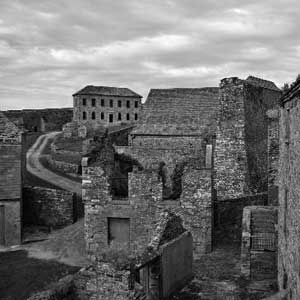
Charles Fort is world famous for ‘The Lady in White’. Under English rule, a young touring officer fell in love with the Commander’s daughter and after a wedding day of festivities, night duties returned to normal as Charles Fort was still an operational garrison. The newlyweds took an evening walk along the parapets and the young bride was soon distracted by a single white flower growing below.
A young sentry offered to fetch it as a wedding gift if her officer husband would mind his post. The groom did so, however the sentry did not return. The officer sent his new wife to their chambers while he stood guard. Tired after a day of drinking and excitement he gradually dozed off, leaning on his musket.
Later that night the Commander took to his rounds and found the sleeping soldier, raised his gun and fired, realising at the moment he released the trigger that he was shooting his own son- in- law in the heart. Distraught and unable to face the grief and judgement of his daughter, the Commander threw himself from the battlements.
The young wife went in search of her husband, only to find his bloody corpse. In despair she looked out over the ramparts and saw the broken body of her father below. This was all too much for the new bride to take in and so she leapt broken hearted to her death.
From that day her lonely spirit, dressed in her wedding gown wanders the parapets of the Fort, desperate and forlorn and can be seen as the evening turns to night.
McMahon’s Castle, Carrigaholt, County Clare
Now just the shell of its former five storey grandeur, the castle in Carrigaholt still holds onto one thing very tightly and that is the malevolent spirit sealed within its walls.
Built in the late fifteenth century by the McMahon clan, the castle became a place of battle, betrayal and execution. Did all the years of conflict and death leave a bad energy in McMahon’s Castle? Whatever evil spectre remained, it was deemed so wicked that it was sealed within a chamber and not disturbed – until the 1920’s.
An exorcist had the room unsealed and climbed down inside it with the intention of ridding McMahon castle of its wicked entity, however his body was found the following morning, stone cold and face set in a rictus of horror. The chamber has been impenetrable ever since.
Glenquin Castle, Kileedy, County Limerick
Standing on the same ground since 1462, this tower house nestled in the Golden Vale has a dark and sinister history. The site of many battles and pivotal in the protection of West Limerick during invasions, there has always been bloodshed, right up to 1916 and the Easter Rising, where Glenquin Castle was the rally point for the West Limerick Republicans. It is believed the dark events and sense of foreboding that is felt within are down to the blood of slain enemies being mixed into the mortar as the castle was built. Not even a crow will fly over the tower, too terrified of the darkness within.
Leap Castle, Coolderry, County Offaly
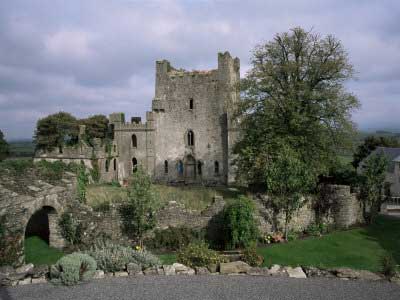
Investigated by Most Haunted, Scariest Places on Earth and the TAPS team from Ghost Hunters, this castle was built in the late thirteenth century by the O’Bannon clan and could well be the most haunted place in Ireland.
A priest was saying Mass for his family in what is now known as The Bloody Chapel. His brother stood and plunged a sword through him, whereupon the priest fell across the altar and died and his restless spirit still remains. The chapel ruins still illuminate in the darkness.
Monks have been seen in the Priests House and a man seen pushing a barrel up a flight of stairs only for it to fall. In the Murder Hole Room, a cold hand has grasped the wrist of a resident, only for the room to fall still as a groaning is heard and the sound of a body falling to the floor.
A woman known as The Red Lady has been seen prowling the halls, dressed in scarlet and brandishing a knife with a look of pure hatred upon her face. Emily fell from the battlements in the 1600’s as an eleven-year-old and her fall can be witnessed time and again, although she disappears before impact. Charlotte is a young girl with a deformed leg who can be seen walking the floor and at the fireplace.
The Elemental is an ethereal being present on the grounds before the castle was built by the Druids who practiced their magicks here. Described as a grey creature, decomposing with claws and emitting a foul stench, the Elemental can be felt as a sinister presence – it will only manifest and attack if it is provoked, so my suggestion is that you don’t.


